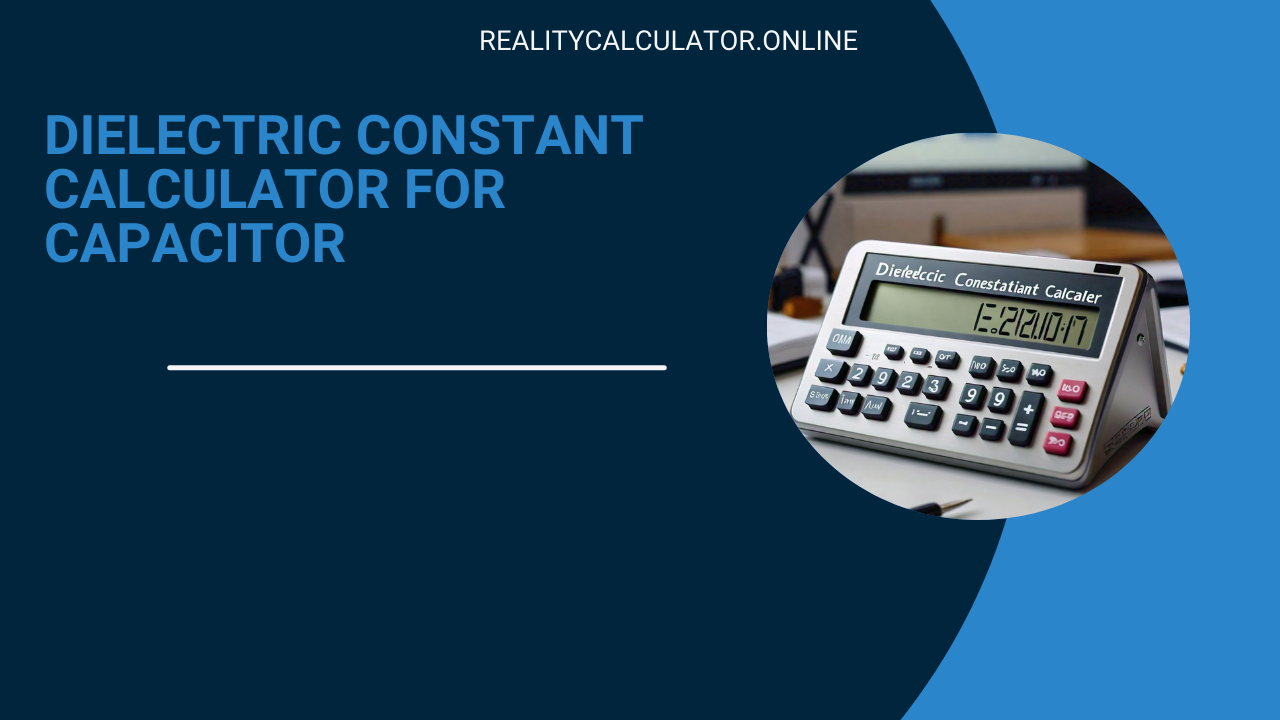Capacitors are fundamental components in electronic circuits, serving various purposes, from energy storage to signal filtering.
One crucial aspect that influences a capacitor’s performance is its dielectric material, which can significantly affect capacitance

Dielectric Constant and Capacitance Basics
What is Dielectric Constant?
The dielectric constant, often denoted as ε_r, is a measure of a material’s ability to store electrical energy in an electric field.
It is defined as the ratio of the permittivity of a substance to the permittivity of free space (vacuum).
The higher the dielectric constant, the greater the material’s ability to store charge, which can lead to higher capacitance in capacitors.
Formula and Variables for Calculation
To calculate capacitance using the dielectric constant, we use the formula:C=ε⋅εr⋅AsC = \frac{ε \cdot ε_r \cdot A}{s}C=sε⋅εr⋅A
Where:
- CCC = Capacitance (in farads)
- εεε = Permittivity of free space (8.854×10−12 F/m8.854 \times 10^{-12} \, F/m8.854×10−12F/m)
- εrε_rεr = Dielectric constant of the material
- AAA = Area of the capacitor plates (in square meters)
- sss = Separation between the plates (in meters)
This formula highlights the role of the dielectric constant in determining the overall capacitance of a capacitor.
How to Calculate Dielectric Constant
Step-by-Step Calculation Guide
Calculating the dielectric constant involves the following steps:
- Identify the Dielectric Material:
Determine the material between the capacitor plates. - Gather Required Measurements:
- Measure the area AAA of the capacitor plates.
- Measure the distance sss between the plates.
- Use the Dielectric Constant Formula:
- Apply the capacitance formula mentioned above to find εrε_rεr:
Example Calculations and Units
Let’s consider an example: A capacitor with a plate area of 0.01 m20.01 \, m^20.01m2 and a plate separation of 0.005 m0.005 \, m0.005m has a capacitance of 10 μF10 \, \mu F10μF.
Using the formula:εr=(10×10−6)⋅0.0058.854×10−12⋅0.01ε_r = \frac{(10 \times 10^{-6}) \cdot 0.005}{8.854 \times 10^{-12} \cdot 0.01}εr=8.854×10−12⋅0.01(10×10−6)⋅0.005
Calculating this will yield the dielectric constant for the material used in the capacitor.
Dielectric Constant in Capacitors
Applications in Electronics
The dielectric constant plays a critical role in designing capacitors for various electronic applications.
Capacitors with high dielectric constants are commonly used in applications requiring compact size and high capacitance values, such as smartphones, computers, and RF circuits.

Common Dielectric Materials and Constants
Common dielectric materials include:
- Air: ε_r ≈ 1.0006
- Teflon: ε_r ≈ 2.1
- Ceramic: ε_r ≈ 6-8
- Polypropylene: ε_r ≈ 2.2-2.3
These values help engineers select appropriate materials for specific applications, ensuring optimal performance.
Capacitor with Dielectric Overview
Importance of Dielectric Material
The choice of dielectric material directly affects a capacitor’s performance, stability, and lifespan. Dielectric materials can influence the voltage rating, leakage current, and temperature stability of capacitors, making their selection crucial in electronic design.
Dielectric Capacitor Calculation
Key Formula
The capacitance can be calculated using the formula:C=ε⋅εr⋅AsC = \frac{ε \cdot ε_r \cdot A}{s}C=sε⋅εr⋅A
This equation is vital for engineers and designers to ensure the capacitors meet specific requirements.
Variables Explained
Example Calculation and Common Queries
- Capacitance (C):
The amount of electric charge stored per unit voltage. - Permittivity (ε):
A measure of how much electric field is ‘allowed’ in a material. - Relative Permittivity (ε_r):
The dielectric constant, indicating how much better a dielectric material can store charge than vacuum.
Calculating Permittivity and Relative Permittivity
To calculate relative permittivity, you can rearrange the capacitance formula.
For instance, if a capacitor is designed to have a capacitance of 20 μF20 \, \mu F20μF, and the dielectric material is known, use the measurements of area and separation to find εrε_rεr.
Conclusion
Understanding the dielectric constant and its calculation is crucial for anyone involved in electronics design.
Whether you’re an engineer selecting components for a project or a hobbyist curious about how capacitors work, utilizing a dielectric constant calculator can streamline your calculations and improve your designs.

